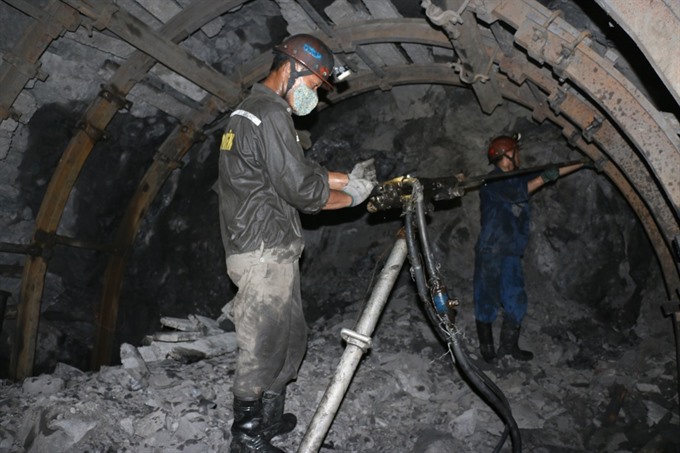 Economy
Economy

Việt Nam National Coal and Minerals Group (Vinacomin) has targeted coal consumption of some 36 million tonnes in 2018, an increase of 2.5 million tonnes from this year, Đặng Thanh Hải, Vinacomin’s general director, said.
 |
| Coal exploitation at Hà Lầm Coal Company in the north-eastern Quảng Ninh Province. Vinacomin plans to produce some 35.36 million tonnes of coal and import 500,000 tonnes of coal in 2018. — Photo baoquangninh.com.vn |
QUẢNG NINH — Việt Nam National Coal and Minerals Group (Vinacomin) has targeted coal consumption of some 36 million tonnes in 2018, an increase of 2.5 million tonnes from this year, Đặng Thanh Hải, Vinacomin’s general director, said.
Hải told a conference on Monday that of this total, coal exports are expected to be 1.9 million tonnes, up 400,000 from 2017.
“Coal exploitation and trading next year would see favourable conditions as many thermo-power plants are scheduled to become operational, increasing coal demand. In addition, Vinacomin has been active in diversifying its consumption markets, not significantly depending on traditional ones,” he added.
Vinacomin plans to produce some 35.36 million tonnes of coal and import 500,000 tonnes of coal in 2018.
It is also trying to reduce coal inventories in 2018 to eight million tonnes from the current 10 million tonnes.
To meet the set targets, the group signed contracts with its members undertaking coal exploitation and production.
Its member will focus on coal that is in high demand and reduce coal with high inventories based on market demand.
Vinacomin will also enhance management of natural resources, products’ quality, labour safety and environmental protection.
Its total revenue in 2017 reached VNĐ107 trillion (US$4.7 billion), posting 6.1 per cent year-on-year increase. Its profit was estimated at VNĐ2 trillion, up VNĐ1 trillion from 2016. It contributed VNĐ13.4 trillion to the State budget.
The group, this year, also completed divestment from five subsidiaries and six associated companies and transferred two foreign invested projects. The total value following capital withdrawal was VNĐ2 trillion.
It also transferred 10 one-member companies limited to its branches.
Following its organisation restructure, Vinacomin has four subsidiaries in which it holds 100 per cent of charter capital and five units, out of its total 47 subsidiaries. — VNS